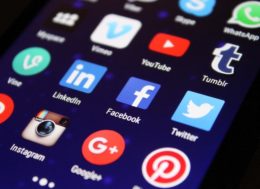


Lessons From a School on Handling Social Media Crises
By Thom Fladung/Hennes Communications
Whether in-person or virtual, the kids are still in school. For the moment, however, this will be a class for the adults – and class is now in session on how to handle a social media crisis.
On a Labor Day Sunday some time ago, the leadership team at a school that Hennes Communications has worked with got wind of a tweet.
The tweet was directed at the school and it simply said: “Handle this.”
Below that two-word message was a screen capture from Snapchat that showed a group of students in a discussion that included liberal use of racial slurs, references to the KKK and sexual references.
In rapid fashion, here’s what the school administrators did:
- Posted a tweet on that Sunday saying they were aware of the problem, that such hate speech had no place at the school and that they were investigating further.
- The head of the upper school emailed upper school students on Monday morning, noting there would be a school assembly at 8 a.m. Tuesday.
- The head of school emailed the full school community, saying school leadership was aware of the social media posts, which violated the school’s code of conduct, that the parents of students involved had been contacted and that there would be more to come.
- The Tuesday 8 a.m. school assembly included addresses from the head of the upper school, student leaders from the Black Student Union and student leaders from the Student Council. Those remarks were live tweeted and video links were posted on Twitter and Facebook.
- The head of school followed up with another email to the full school community Tuesday evening, reporting on the latest events, including the Upper School assembly.
- The school also was ready with a special page on its website that had links to all of the above and more on the incident, including a link to the student handbook and the code of conduct policy.
Was it still rough on the school? Absolutely. There were critics from all sides, some saying the school overreacted to private social media posts and others saying the school was whitewashing the incident while demanding that the offending students be expelled.
But supporters also almost immediately emerged, including the original student who posted on Twitter, saying he appreciated his school’s rapid response and that he would always be loyal to the school.
And there were tweets like this one: “How quality school leadership successfully turns racist behavior of a few of their own into a teachable moment to build a better community.”
The lesson from all of this, from a crisis communications standpoint, is simple – and we’re reminded of it over and over again: You can’t predict a crisis, but you can plan for them.
The school couldn’t plan for this exact scenario, of course. But school leaders already had in place a solid crisis communications plan. They knew who would say what to whom in such a situation. They’d talked about when a response to a social media-fueled crisis would be warranted – and what steps they’d take to respond. And when the moment came, they were able to turn all that planning and talk into action – fast.
Does your organization have a plan in place to respond to a crisis – and does that plan include the lightning-fast response now required on social media?
If not, you can gamble your organization or your client will never face a firestorm on social media like the one faced by this school.
But when your reputation is your greatest uninsured asset, that’s a not a gamble we’d recommend.
Thom Fladung is the managing partner at Hennes Communications. Want to learn more about crisis communications – and especially how to use social media to your advantage? Contact us at 216-321-7774.